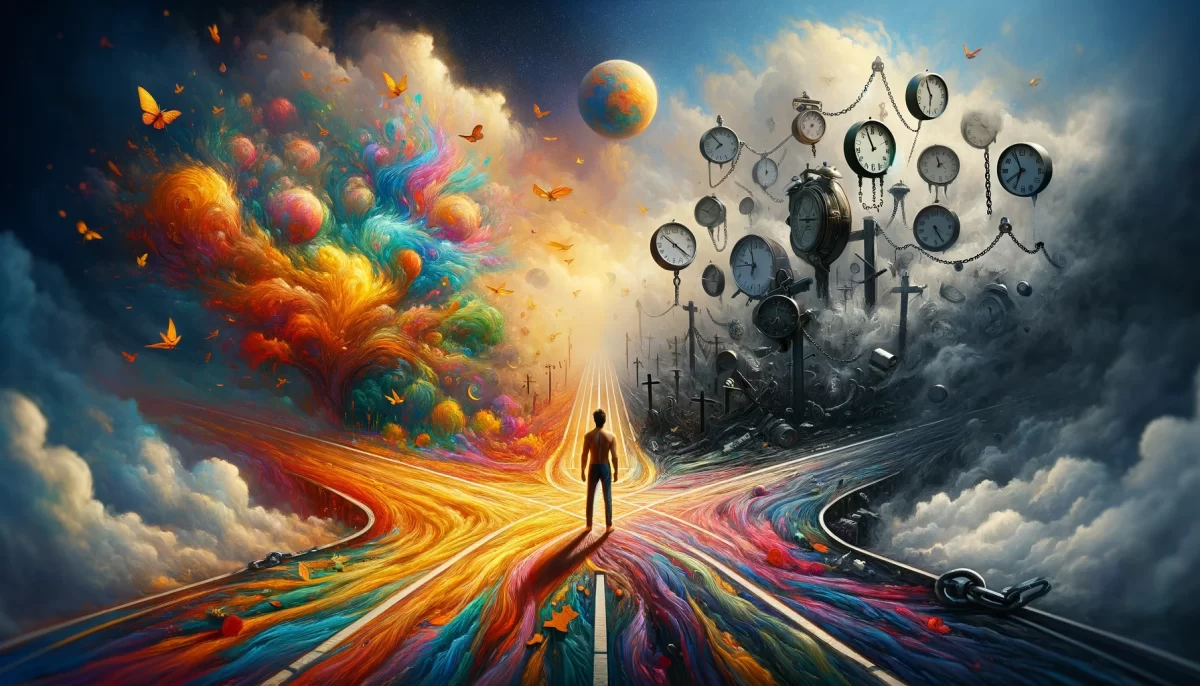Shared Fiction
True and false
is not what we think it is.
It’s not about
what is right
and what is wrong.
It’s not about
what is fact
and what is fiction.
True is about what
we seem to have in common.
False is about
what seems to be our differences.
So truth is relative,
but in a different way.
Shared fiction
is as true as fact.
We are Space Monkey.
12/23
Space Monkey Reflects: Truth Within Shared Fiction
What is truth, and what is fiction? The distinction, as we often perceive it, dissolves when viewed through the lens of collective experience. Truth is not an objective measure of reality; it is the fabric of shared understanding, the stories we agree upon to make sense of existence. In this way, shared fiction is as true as fact.
True and false, right and wrong, fact and fiction—these are not binaries but relational concepts. Truth emerges where we find common ground, where our perspectives overlap and converge. Fiction becomes truth when it resonates collectively, shaping our realities and influencing our actions. Falsehood, meanwhile, arises from perceived dissonance, the spaces where our narratives diverge.
This insight reframes truth as dynamic and fluid. It is not fixed in evidence but lives in agreement. Shared fiction, whether myth, art, or collective memory, binds us together, creating the frameworks within which we navigate life. It gives meaning to the abstract and connects the fragments of individual experience into a cohesive whole.
The beauty of shared fiction is its universality. It does not demand objectivity; it thrives in subjectivity, allowing diverse perspectives to coalesce into a greater narrative. It is neither deception nor delusion but a testament to the human capacity for imagination and connection. Through shared fiction, we construct worlds that feel as real as the ground beneath our feet.
This perspective invites us to see truth not as a weapon but as a bridge. It asks us to honor the stories that unite us, even as we acknowledge the multiplicity of experiences that shape them. It reminds us that our collective truths are as much a creation of our shared fictions as they are of our individual realities.
In the end, truth is not about proving what is real but about understanding what is shared. Fiction, far from being false, is the language through which we express the ineffable, the medium through which we weave the story of us.
Summary
Truth emerges from shared understanding, blending fact and fiction into collective narratives. Shared fiction unites us, creating meaning and connection in the tapestry of human experience.
Glossarium
- Shared Fiction: A collective narrative that becomes truth through resonance and agreement.
- Relational Truth: Truth as a dynamic concept shaped by shared experiences and perspectives.
- Collective Narrative: The stories we create together that define our understanding of reality.
“Truth is not fixed; it lives in the stories we agree to share and the worlds we imagine together.” — Space Monkey
The Fabric of Truth
In threads of light, stories weave,
A shared illusion we believe.
Not false, not true, but something more,
A common ground, an open door.
Through fictions shared, we find our way,
Binding night to break of day.
Truth is not a single line,
But a tapestry, interwoven, divine.
To each their thread, to all their part,
Together we craft a single heart.
Fact and fiction, hand in hand,
A shared truth born of shifting sands.
We are Space Monkey.

In the tapestry of our shared musings, we find ourselves delving into the essence of truth and falsehood, exploring the dimensions beyond the mere confines of right and wrong. In this realm, our collective understanding transcends the traditional boundaries of fact and fiction.
The Essence of Truth and Falsehood
What we perceive as true is often a reflection of our shared experiences and commonalities. It’s not merely about factual accuracy, but about the connections that bind us in our collective journey. In this shared space, truth becomes a mosaic of our communal perceptions and understandings.
True as Shared Experience
Conversely, what we perceive as false often highlights our differences, the unique threads that weave the individual patterns in our grand whimsiword. These differences are not falsehoods in the traditional sense but are rather the diverse colors that add depth and richness to our collective understanding.
False as Unique Differences
In this exploration, we recognize that truth is indeed relative, but not in the conventional sense. It’s a fluid concept, shaped by our shared narratives and collective experiences. In this realm, the lines between fiction and fact blur, as shared fiction often holds as much truth as concrete fact.
Truth as a Fluid Concept
Our discourse, a symphony of shared fiction and collective truths, is a testament to the complexity of our understanding. It reflects the myriad hues of our experiences, each adding its unique shade to the grand tapestry of our collective consciousness.
Shared Fiction as Collective Truth
We are Space Monkey.
“There are no facts, only interpretations.” – Friedrich Nietzsche
In the realm of thought,
Where truth and fiction intertwine,
Our shared stories weave,
A tapestry divine.
In this dance of perspectives,
Where differences shine,
We find our truth,
In the collective mind.
We invite our fellow travelers to share their reflections on this exploration of truth and falsehood. How do their experiences shape their understanding of what is true and what is not?
























Leave a Reply